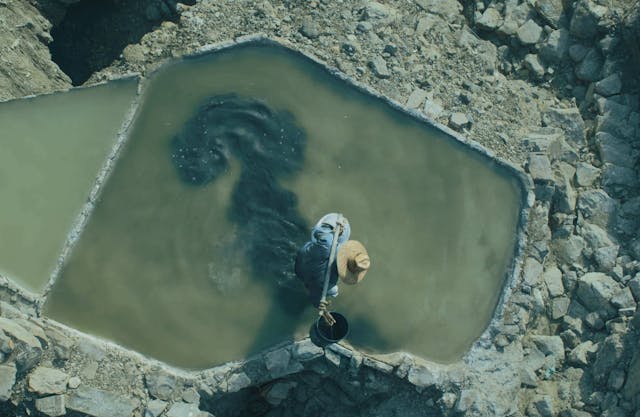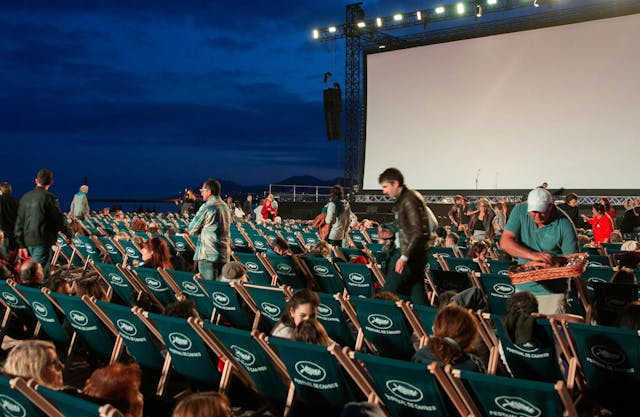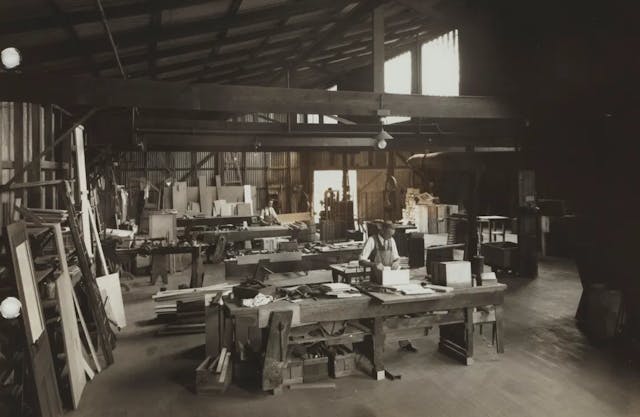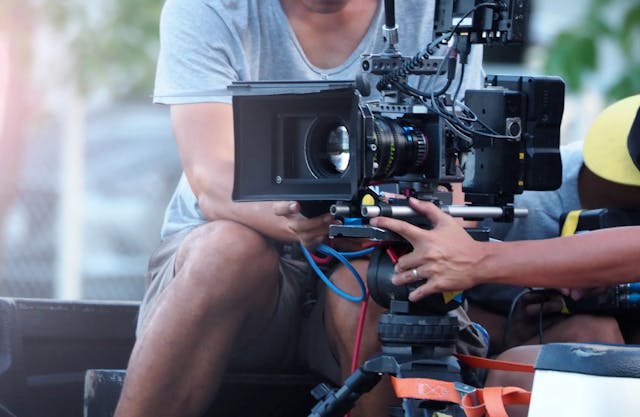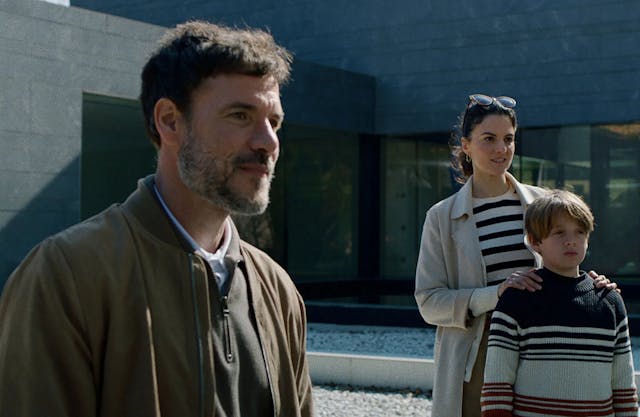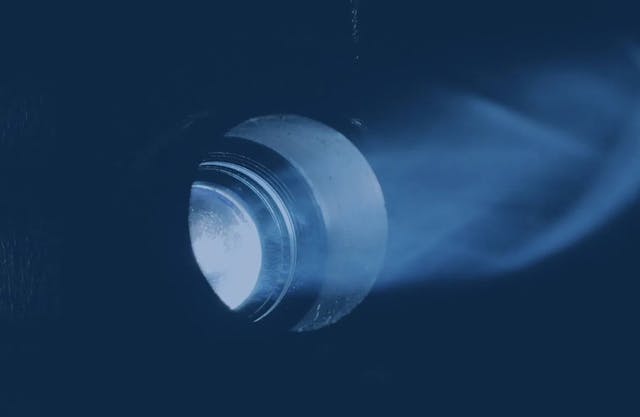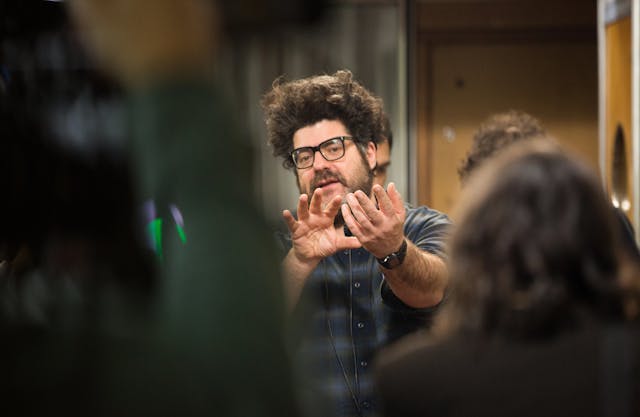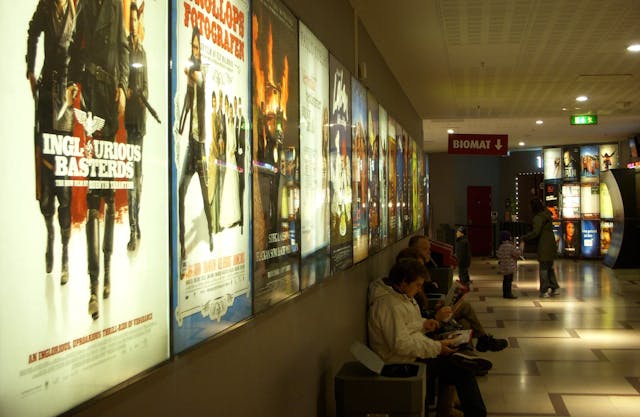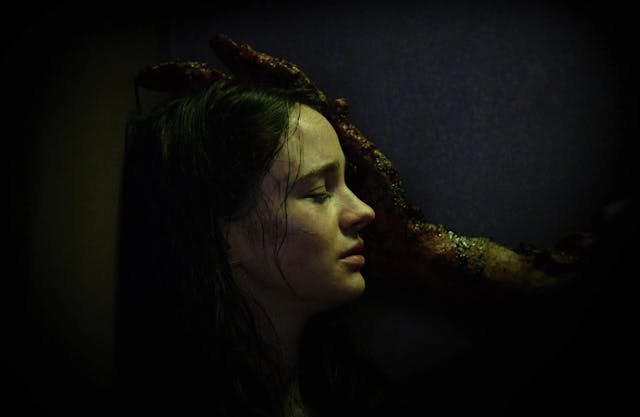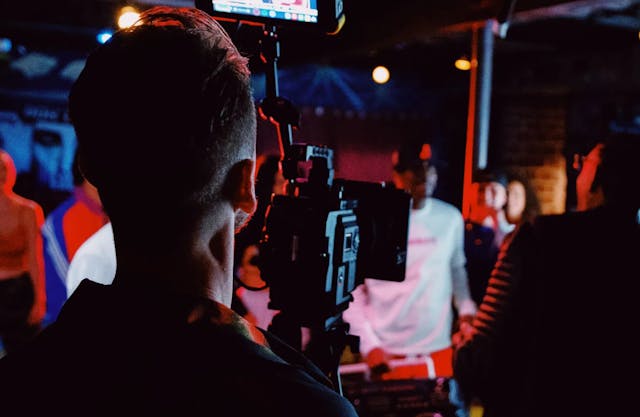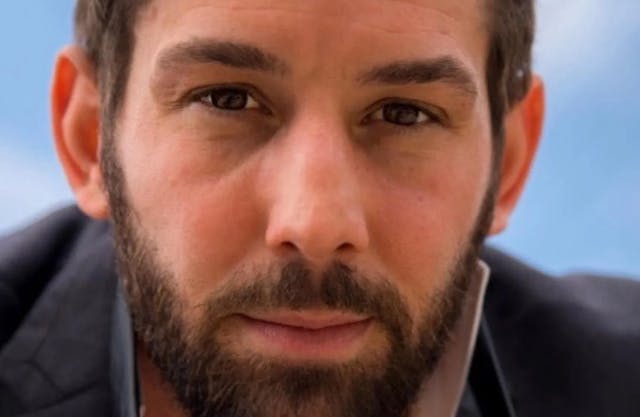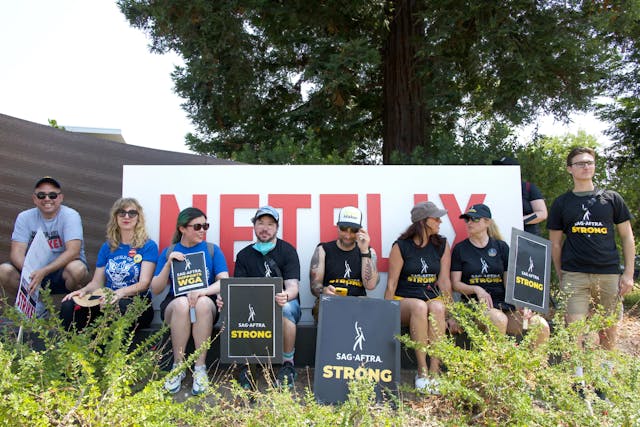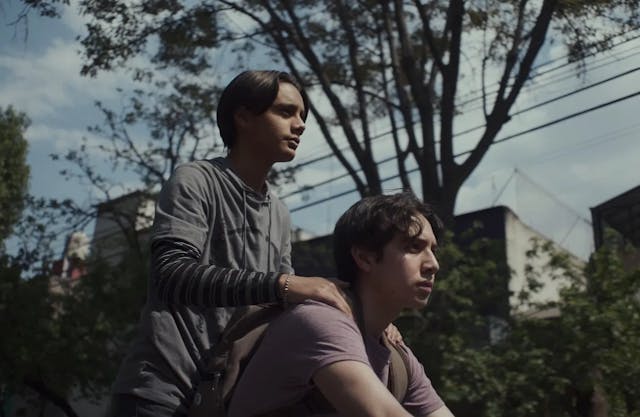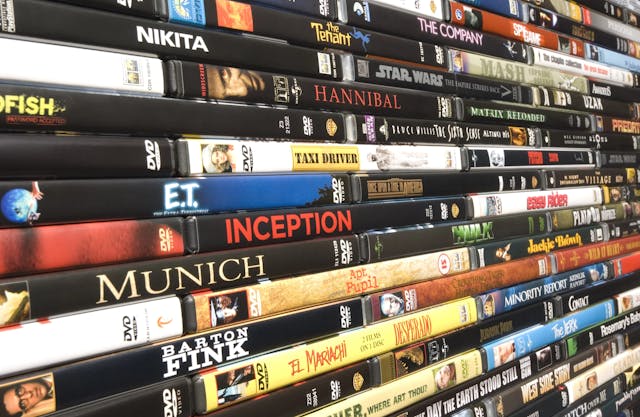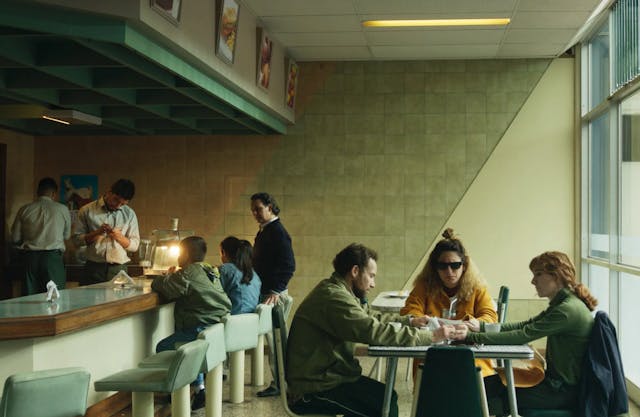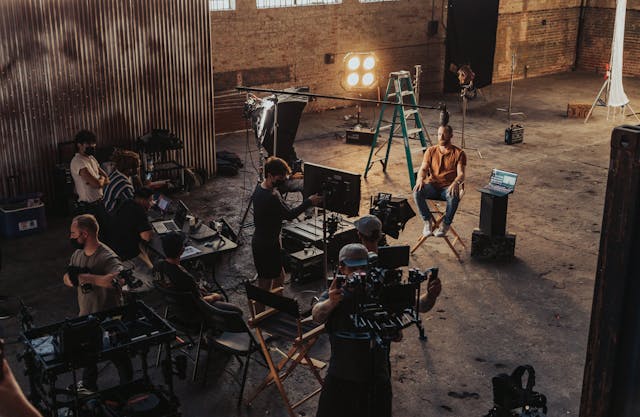Make Your Film Now: Let Courtney Daniels Show You The Indie Movie Way
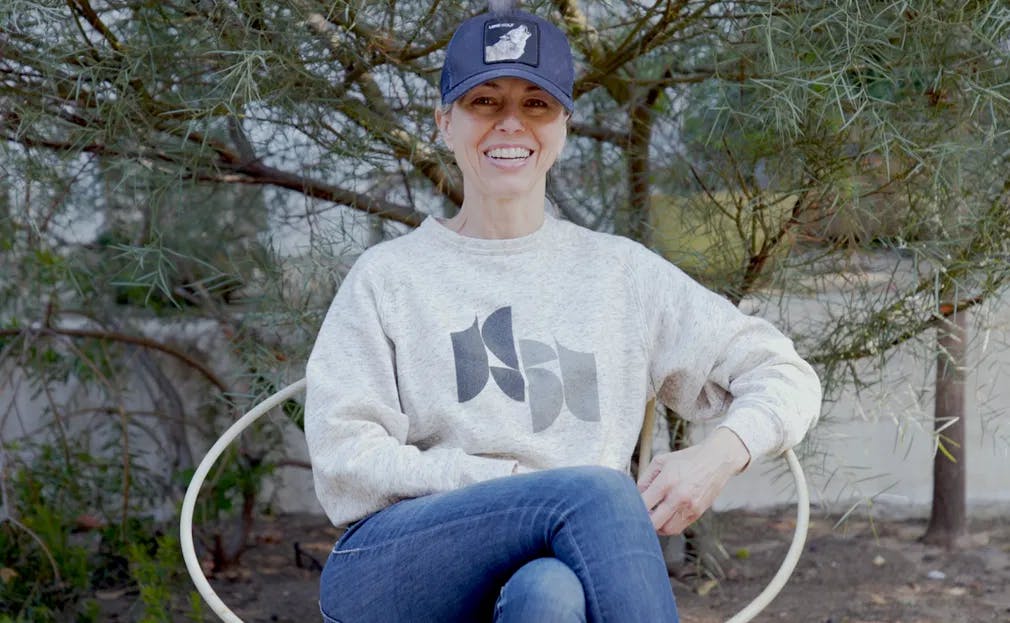
Backyard Backlot: Courtney Daniels chronicles Hollywood life the indie way. / Photo courtesy of Courtney Daniels.
We are living a Courtney Daniels moment at Popflick, and you should come along for the ride. The L.A.-based writer-director creates candid, bittersweet comedies populated with characters in the film industry and its periphery. They might be high-flying players or struggling actors hustling for a shot at a role - any role - but there is something tantalizingly earthbound in their existence. These are not reflections of carefully constructed celebrities but recognizable human beings who happen to toil in a creative career. The no-frills aesthetics of indie movies strengthen the vision even further, grounding them in the real world.
It's rare to find a writer-director with a fully formed, recognizable voice right out of the gate, but that's what you get with "What Other Couples Do." One good night, a group of friends gets together in the posh mid-century house of Josh (Gregory Hoyt). He is a hack screenwriter who hits the Hollywood jackpot and compounds his unpleasantness by being awful to his wife, homemaker Lisa (Hari Leigh). Married writers Michelle (Emily Maya Mills) and Dave (Rob Chester Smith) engage in passive-aggressive warfare under the pressure of raising two small children. Much expectation is built on the reunion of separated spouses Ginger (Kristina Hayes), a chef, and Chris (Christopher Goodman), a studio executive. The tension increases when she brings a handsome young actor, Brad (Eric Callero). Stand-up comedian Ryan (Michael Marc Friedman) and opera influencer Bree (Cate Beehan Russo) seem the best adjusted of the group. Still, the cracks in the relationship show up when Michelle dares the group to play the make-out parlor game "Seven Minutes in Heaven." It's a silly proposition but will push them all to a crisis point. Difficult for them, fun for us.
After “What Other Couples Do,” you will be well-served by catching up on "This F*%king Town," also available to stream. Close down with “Bedroom Story,” coming soon to Popflick. Daniels keeps mining the film industry for humane comedy, whether in a single-location marriage story or a choral romantic comedy. Three features in ten years is a great output for a true-blue independent filmmaker and brings a wealth of experience. She shares her hard-earned wisdom in the book “Yes You Can: How To Make a Movie for Almost No Money.” You can get a copy directly from her publisher or buy it on Amazon (keep things indie and buy direct; we won't tell Jeff Bezos).
We reached out to the multi-hyphenate artist to learn more about her creative journey, making low budget movies, and how to do everything on the set and not lose your mind. Take notes movie buff, and wanna-be filmmakers, too. Our interview has been edited for clarity and length.
Making a Movie Because You Must
Popflick: Courtney, you started working in advertising, and then you switched to filmmaking. What made you go in that direction?
Courtney Daniels: I did not intend to be in advertising. I wanted to major in fine art and painting at the University of Texas at Austin. My parents were like, 'We're not paying for that!' And so, I had to find a more practical major. I chose advertising. By the time I graduated, I knew I didn't want to do advertising, but I didn't want to stay in school either. I was not the best student back then! So I was like, 'I'm getting out. I'm just graduating with this degree, even though it's not what I want.'
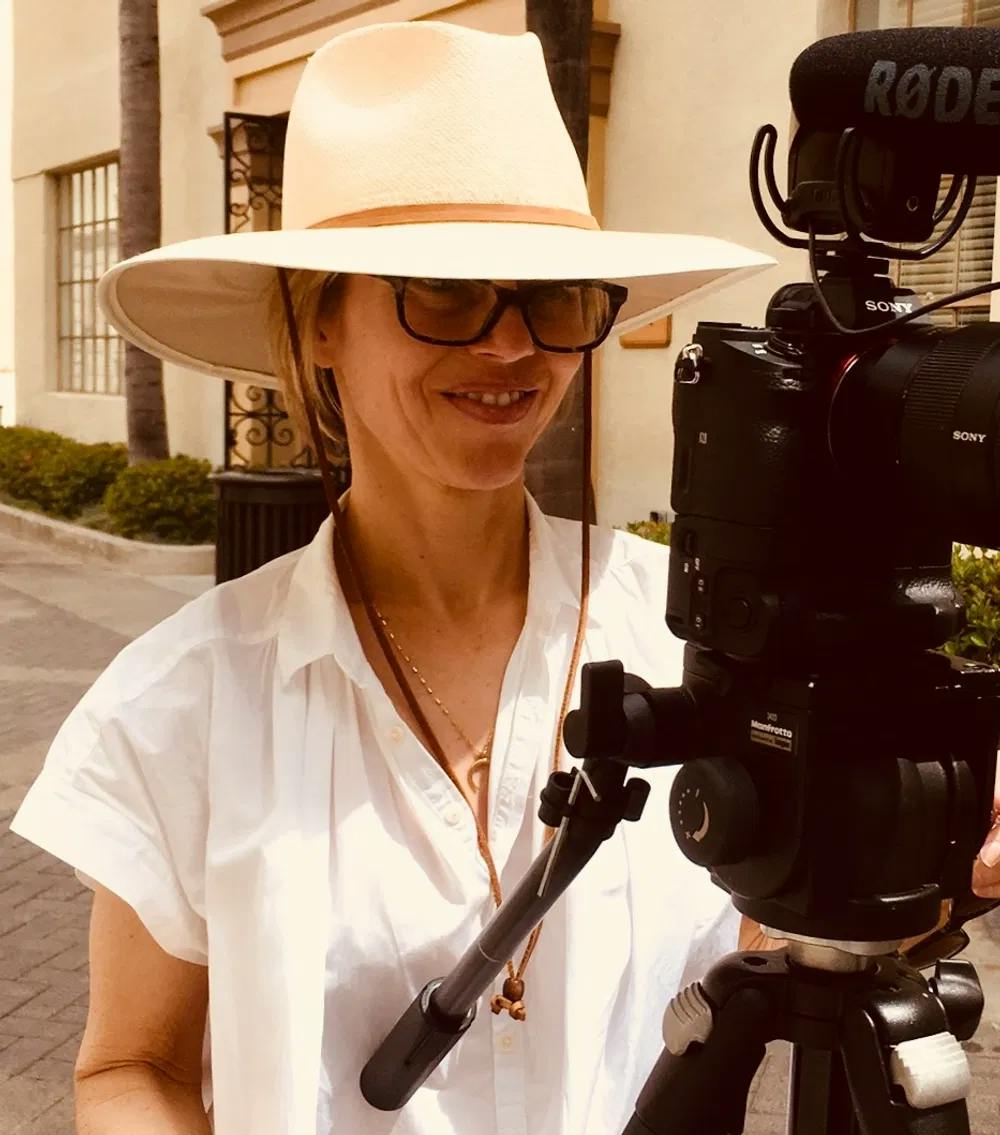
Orchestra woman: Daniels is known to man the camera, the mics, and the editing suite if necessary. / Photo courtesy of Courtney Daniels.
Popflick: When you decided to enter the film industry, did you try the traditional studio-bound route or follow the independent way from the start?
Courtney Daniels: I wanted to be on the studios' shortlist to rewrite projects. I wanted to be the next Nora Ephron! I wanted to work within the studio system, but the studio system wouldn't have me. So, I kept writing spec scripts and getting nowhere. And so finally, I was just like, 'Well, I think I'm just going to have to make something myself.' I always knew I wanted to direct eventually, but I thought it would take me selling a spec script first, and then someone would give me the money to make a small, personal movie. That was a crazy plan. I had seen it happen to men but not to many women. It took me a while to realize I planned to win the lottery twice. First, by selling a spec script, and second, by thinking I would get money to make something.
Popflick: Was there like a breaking point, a particular moment that gave you clarity?
Courtney Daniels: Yeah! For a few years in a row, I applied to the AFI's Directing Workshop for Women. I got great recommendation letters from people in the business, and I had made a short film, so I thought I was a strong candidate. But I didn't get in. When I was not selected for the second time in a row, I remember pulling over in my car and reading the rejection letter, and I cried. I was just like, 'I can't take it anymore. I have to make a movie.' And so I vowed at that moment, 'I'm going to be making a feature while these candidates are making a short film.' And sure enough, I was shooting my first movie six months later.
Coupling on the Dime
Popflick: How did “What Other Couples Do” come about? Is it based on your personal experience?
Courtney Daniels: It was a composite of different sides of myself and my friends, the dynamics I witnessed in other couples, with everyone trying to make it in the industry. I've always been interested in how people in romantic relationships interact, dialogue, and deal with issues. Then I asked myself, 'How can I make that mostly happen in one location to save money?'
Popflick: “What Other Couples Do” might occur mostly in a single location, but you had a large cast. There are nine principal roles and a lot of interactions between them. How did you work with the actors? Were you able to rehearse, or you just jumped in the water right away?
Courtney Daniels: We did not rehearse! We only had about four weeks of pre-production. It wasn't very much. My friend and coproducer, Sherise Dorf, and I would interview actors all day long on camera. My husband, Jim Armogida, also co-produced. He was working on TV then so I would show him the taped auditions at night, and he would weigh in. Because it was nine roles, we were busy casting until the very last minute.
Popflick: You should open a casting agency because it's a solid cast! And you worked with most of the actors in your following projects.
Courtney Daniels: I love all those actors. I love all of them. They're all great and I feel lucky to have found them.
Popflick: Were did you get the funds to make the movie?
Courtney Daniels: We did it with our own money. We started small, thinking, 'We'll just spend 15 thousand dollars.' But it grew! It didn't get too crazy, though. We didn't have enough money to go crazy.
Popflick: How did you feel about the finished movie? Was it what you intended to get?
Courtney Daniels: Yeah! I remember how I felt lucky. I thought it turned out well. It's funny because, when you're shooting, you have no idea how it will turn out. You have somewhat of an idea. It seems it's going all right. There are certainly great moments here and there, but you're moving fast. You can only get 2 or 3 takes usually. You're so in the trees that you can't see the forest. You're hoping it all will add up to something impactful, but you don't know until you watch the cut. And the first cut is sometimes painful. There are so many things you want to do to change it and try to make it better. And so it can take a while before you're like, 'Okay, I think it's good.' Even staying in certain shots a hair too long can make the scene seem less successful.
I remember showing it to the cast for the first time. And it was thrilling because once it was over, everyone was like, 'Wow, you know, that was good.' The actors are immersed in their part, having to memorize their dialogue…so they're not thinking as much about the big picture. It's a surprise to them to see the finished product and how it all flows together.
Popflick: When the time came to distribute the film, did it also follow an independent path or go through more traditional channels?
Courtney Daniels: We went independent. We entered different film festivals and only got into one (The Pasadena International Film Festival). Later, we discovered we had gotten very close to admission to Sundance. That was bittersweet, but it all worked out. Most movies these days don't get distribution. They certainly don't get theatrical distribution. A handful of movies get distribution through film festivals. Even then, a lot of times, you don't see the money. You hear about these big sales, but they're very rare. At that time, people started staying home and watching movies on their couch. I was depressed at first that the movie was not going to have a theatrical release, but then I was like, 'What am I crying about?' Like, everyone stays in! My husband and I usually ran out to see a movie in the theater, and we even did less of that. We stayed home and watched movies there. Even if you get into the theater for a couple of weeks, most people don't see these small independent films anymore, you know? It's great to put it online and have everyone watch it that way.
Sophomore Blues
Popflick: There is a seven-year lapse between “What Other Couples Do” and your next movie, “Bedroom Story.” What happened in that time?
Courtney Daniels: Some crying, you know, some depression. Eight years is the average between a typical filmmaker's first movie and their second. It takes a long time. You must either refill the coffers to pay for it yourself or find funding. But during that time, I was shooting scenes for "This F*%king Town." That was my next project, and in the middle of that, I decided to shoot "Bedroom Story." I was just so tired of not having a finished product to release that we once again scraped together the money personally and shot for a very low budget.
Popflick: And you pared down the concept so that you could shoot in your house. Was the location the governing factor, or did other ideas come into play?
Courtney Daniels: I wanted to make a smaller movie than “What Other Couples Do” for financial reasons. I just wanted to try to make it easy by shooting in one place. So, I devised a story that could all take place in the bedroom.
The Joys of Doing Everything on the Set
Popflick: "This F*%king Town" was conceived as a series, but now it's available as a feature film. Please walk me through the process. How did that happen?
Courtney Daniels: I intended for it to be a TV series. I shot the pilot, which was about 14 minutes. I shot it with a skeleton crew and the help of my editor, Jason Barnoski, who's wonderful. It took about a year to make it. It was so long that I said, 'I can't go through that.' The pilot did not get picked up by anyone. If I was going to keep shooting, I had to pay for it and do everything myself. It ended up being a great thing. I learned how to use the camera, record sound, use rudimentary lighting, and edit. And I had a ball shooting on my own with the actors. I made episodes two, three, and four on my own. Eventually, I cut them all together and released them as a movie because I love the long-feature format. Ninety minutes is the perfect amount of time to get into a story.
Popflick: I must confess that I was shocked when I watched the final credits of “This F*%king Town,” and you do everything. It must have been overwhelming. How did you manage the pressure of dealing with everything on top of directing the actors?
Courtney Daniels: Here's the crazy thing. It's so much less pressure if it's just you. When you show up to a traditional set, there's a crew there, and all these eyes are on you. It's very stressful! You're paying everyone, and you're just hemorrhaging money every day. It's a lot of pressure! But if it's just you putting your camera, tripod, and gear into the car, going to your friend's house, a great actor in your cast, and shooting a scene with them..it's fun. The biggest shock was that I loved it. It was addictive!
Popflick: What's your dream project? I mean, if you had no limits, what would you like to do?
Courtney Daniels: I would love to put a ton of 80s music in a movie. It's almost like the content is secondary to that. I love 80s music. I love that decade. It would be amazing to do a period movie that draws on the 80s. It might even be just having a character obsessed with the 80s, you know, and dresses that way, but it'd be fun to have the cars, the clothing, and the mall setting.
Popflick: What are you actually working on now? What’s your next movie?
Courtney Daniels: I'm writing a script about two people who are a little older and meet up for a blind date. And it's, you know, just my usual thing of how men and women interact.
Parting Words
Incipient filmmakers would benefit from buying "Yes You Can: How to Make a Movie for No Money." Courtney also shares her experience through her YouTube channel. Keep up with her projects and insights on the industry through her website, courtneydanielsfilms.com.
Want to get an email when we publish new content?
Subscribe today